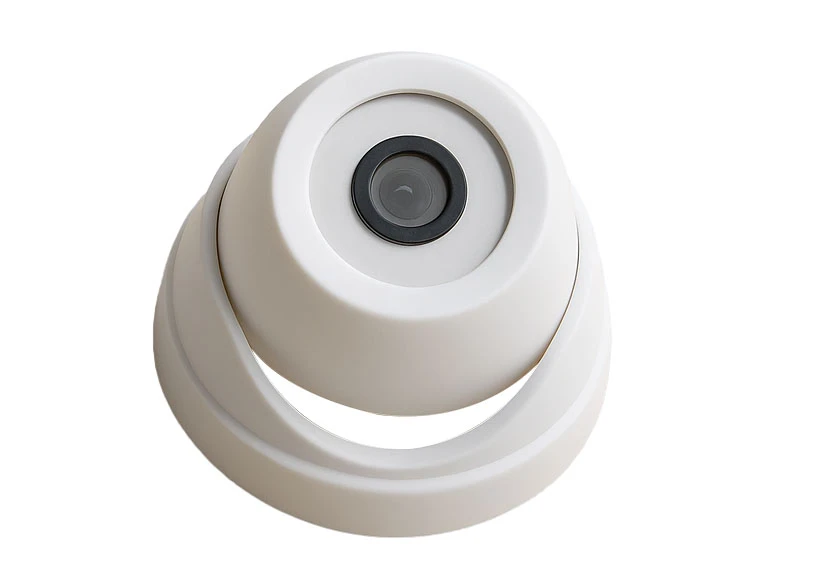
In smart home camera design, the choice of housing material directly impacts product experience and market competitiveness. Most leading brands now use ADC12 die-cast aluminum alloy housings instead of traditional plastic enclosures. This shift is no coincidence — ADC12 aluminum alloy delivers clear advantages in user experience, performance, and adaptability to scenarios.
1. Core Advantages: ADC12 Aluminum Alloy vs. Plastic Housings
1. User Experience: From “Cheap Plastic” to a Premium Look and Feel
How users perceive material quality directly shapes their sense of product value. Plastic housings are often associated with a “lightweight, flimsy, easy-to-scratch” feel. They are easily labeled “cheap” in user reviews, whereas ADC12 aluminum alloy, combined with die-casting, offers a matte metallic finish that blends well with modern interior design. Many users describe metal finishes as “premium” and “matching the home decor”. In addition, aluminum’s superior thermal conductivity prevents the “sticky, greasy feel” that some plastic surfaces develop over time. Real-world usage feedback often mentions that “even after long hours of operation, the housing temperature remains under control”, which significantly improves comfort in daily use.
2. Performance Superiority: Strength, Thermal Management, and Durability
- Structural strength: ADC12 aluminum alloy has a tensile strength of around 220 MPa, more than five times that of ABS plastic (approx. 40 MPa), providing markedly better impact resistance. In outdoor applications, plastic brackets are often reported as “breaking after just a few uses”, whereas aluminum versions can withstand far higher loads without failure. In a typical 1 m drop, an aluminum camera housing may show minor deformation at the corners but remains functionally intact, while plastic housings are far more prone to cracking.
- Heat dissipation: The thermal conductivity of aluminum alloy (around 100 W/(m·K)) is roughly 500 times that of plastic (approx. 0.2 W/(m·K)). Practical tests show that ADC12 housings can improve heat dissipation efficiency by over 30% compared with plastic shells, helping to prevent SoC and image sensors from throttling due to overheating — a critical requirement for 24/7 surveillance cameras.
- Long-term stability: Plastics operated close to or above their heat distortion temperature (around 60 °C and higher) tend to age, warp, and lose mechanical performance over time. By contrast, ADC12 aluminum alloy has a melting range of about 580–600 °C and excellent high-temperature stability, extending the service life of the housing by an estimated 3–5 years compared with standard plastic enclosures under comparable conditions.
3. Scenario Adaptability: From Home Use to Complex Environments
- Home environments: A metallic appearance elevates the visual quality of home interiors. Anti-fingerprint coatings can be applied to address “smudge and fingerprint” concerns, and rounded-corner designs reduce the risk of accidental scratches when installed at low heights or near passageways.
- Outdoor / semi-outdoor environments: For yard, corridor, or porch cameras, aluminum alloy offers better corrosion resistance (especially when combined with anodizing) and UV resistance, whereas plastic housings are prone to yellowing and embrittlement under sun exposure and oil fumes.
- Industrial / office environments: In installations with multiple devices clustered together, the superior thermal performance of aluminum housings helps prevent overheating and improves system stability. Enhanced impact resistance also reduces maintenance costs, as aluminum-housed units are less likely to fail due to knocks or accidental drops during installation and servicing.

2. Selection Guidelines: Not “One Size Fits All”, But Aluminum Is Superior in Most Cases
Plastic housings offer a lower upfront cost (unit price around RMB 15 versus approximately RMB 35 for ADC12 aluminum), which can be suitable for ultra-budget products or applications where extreme lightweight design is the primary goal, such as pocket-sized or highly portable cameras. However, for mainstream smart home cameras, the combined advantages of ADC12 aluminum housings in perceived quality, performance, and service life significantly enhance users’ willingness to pay. Many users consider the price premium “worth it”, and over the long term, aluminum housings can actually reduce after-sales costs by lowering complaint and return rates related to housing failures.
Conclusion: For brands targeting higher-end positioning, durability, and broad scenario adaptability, an ADC12 aluminum alloy housing is the superior choice. It is not merely a material upgrade, but a direct enhancement of user experience and brand value.


